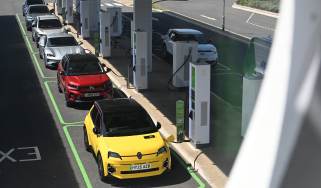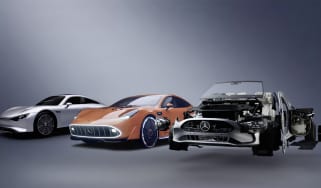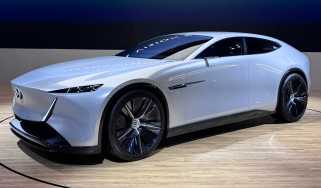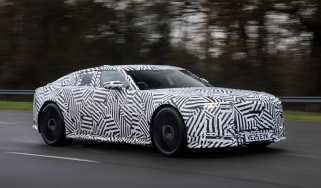What is V2X? Vehicle to everything bidirectional car charging tech explained
Bidirectional charging has been billed as one of the key sustainable future energy solutions; we explain what it is and what benefits it brings
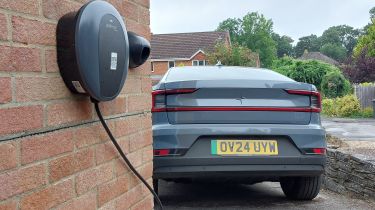
Your car could soon power your home; such an idea may seem odd given that nowadays, most EVs are charged via a home wallbox, pulling electricity directly from the National Grid via your home’s main electrical panel.
However, with the gradual implementation of bidirectional charging, your car could soon act as a portable power bank, standing by to redirect power from its own battery into your home. Of course, it’s not just your home that your electric car could power; certain technologies could enable your car to act as a power supply for tools and appliances, as well as other electric vehicles.
But how does this work, what technology is already out there, are there really any benefits, and what challenges do we face to implement it? These are the questions we’ll answer below, with the help of some industry experts.
What is bidirectional charging?
In a nutshell, bidirectional charging is exactly what it sounds like; energy is able to flow both ways – meaning, for example, that your home can power your EV, and your EV can power your home. While standard single-directional charging transforms AC current to a DC form that a car’s battery can receive, bidirectional tech can revert this back to AC and send it in the other direction.
What are the different types of bidirectional charging?
To make things ever-more confusing, there are several types of bidirectional charging, with ‘Vehicle-to-Everything’ (V2X) being used as a catch-all term for this. We’ve focused on the most common V2X variations below, but there are a handful of more obscure ones in development, and there are sure to be more coming in future, too.
Vehicle-to-load (V2L)
Vehicle-to-load (V2L) is one of the most common types of bidirectional charging, essentially enabling you to use your EV as an enormous mobile power pack, much like the ones people carry around with their mobile phone. Several brands already offer V2L technology in their EVs, primarily aimed at outdoorsy types, because you can use a car to run accessories at a campsite, charge up an e-bike, or supply power tools with electricity at a jobsite.
Vehicle-to-home (V2H)
Vehicle-to-home (V2H) is essentially the same as V2L, but rather than working for a single appliance, it can be used to power your entire home. According to energy regulator Ofgem, the average household consumes roughly seven-and-a-half kilowatt hours of electricity per day, which means even a base Hyundai Ioniq 5 with its 60kWh battery pack could power your house on its own for over a week.
This may sound like an ideal way around powercuts and busy times where electricity is at its most expensive, such as in the evenings, but very few EVs even offer V2H tech and there are even fewer chargers that support it.
Vehicle-to-grid (V2G)
Vehicle-to-grid (V2G) is one of the better-known bidirectional charging technologies and likely to become one of the most prevalent in the coming years. It effectively involves using the power stored within electric vehicle batteries as grid storage, with local and national electricity grids being able to draw from that storage at peak times to meet demand, something known as “load levelling”. During times of lower demand, electric vehicles would recharge as normal, once again drawing their power from the grid.
Just as with V2H, only a minute proportion of EVs currently offer this technology, with those hoping to benefit from V2G requiring a bidirectional charger. Get one of these and sign up for a specific energy tariff (Octopus Energy is currently the only provider in the UK with a V2G tariff) and you can even benefit from free charging by discharging your car at peak times and filling it up when the grid is under less strain.
Vehicle-to-vehicle (V2V)
Vehicle-to-vehicle (V2V) tech is one of the more exciting developments that will enable cars to communicate and interact with each other in several ways. Arguably the most relevant concept here is the ability to charge one car using another; this is handy if you’re travelling in a convoy and need a bit of extra juice, or if you don’t have access to a charger, but your other EV has plenty of charge.
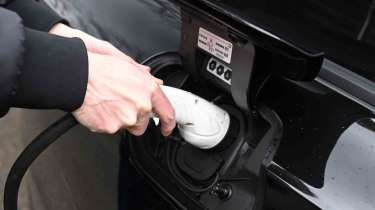
It’s not just charging that the term V2V encapsulates; this technology could also make transportation both more efficient and safer, with short-range communication allowing all vehicles in a certain area to be aware of all other vehicles, from their location to their speed and direction. With this in mind, self-driving vehicles would have a much more comprehensive understanding of what’s going on around them, because they would be able to receive the upcoming actions of other cars, eliminating a lot of the guesswork.
Vehicle-to-infrastructure (V2I)
This system is not connected to charging, but is certainly relevant here. Thanks to Vehicle-to-infrastructure (V2I) tech, cars can communicate with automotive infrastructure such as traffic lights, parking facilities, and traffic systems – and in turn, these systems can pass on knowledge to all vehicles in a particular area.
At its simplest, V2I means a car can let you know to ease off the accelerator so that a light turns green just before you arrive (Audi trialled the technology in its A1 e-tron prototype as long ago as 2013), or enact on-the-fly payments of road tolls. At its most complex and in-depth, it can manage traffic flow in real time by affecting both vehicles and local systems so that queues dissipate and vehicles are directed through the most efficient routes.
What are the benefits of bidirectional charging?
Bidirectional charging has been billed as the future, but what benefits does it actually bring? As we’ve mentioned above, you can use your car to power devices and even your home during power outages, but perhaps one of the main benefits is the ability to reduce strain on the National Grid – something some fear could be an issue as more people switch to EVs.
Speaking with Auto Express, E.ON Drive’s UK marketing director, Dave Butters, said: “By storing energy and drawing it from EVs during peak times, consumers [can] reduce the demand on the grid or even remove energy demand and price peaks altogether. This enables communities to access clean, affordable energy while contributing significantly towards the UK’s transition to clean energy.”
On a wider scale, the chief technical officer of ChargePoint, Hossein Kazemi, explains that “bidirectional charging can also allow large-scale commercial solutions, like a fleet of electric school buses, to charg[e] when electricity is least expensive and sell it back to the grid during peak times. This offsets the electricity costs, and can even generate a net profit of fuel costs.”
Which cars can use bidirectional charging?
As of the time of writing, there are very few cars that benefit from bidirectional charging capabilities such as V2L or V2G. Notable examples such as the aforementioned Hyundai Ioniq 5, as well as its sister car, the Kia EV6, plus the MG4 and BYD Dolphin, all have V2L tech built-in. The Volkswagen ID. Buzz (as well as the rest of the ID. range), plus the Cupra Born and Nissan Leaf benefit from V2H capability. Finally, the Cupra and Nissan also can perform V2G functions, while the newer Kia EV9 gets V2L, V2H and V2G tech as standard.
Why hasn’t bidirectional charging taken off yet?
All of this sounds promising, so you may wonder why bidirectional charging hasn’t taken off yet – and if it eventually does, when it might arrive en masse. According to Kazemi, “whilst EVs that support bidirectional charging are available globally, they’re in limited supply, or lacking full functionality in certain scenarios. In a similar vein, the necessary infrastructure, such as compatible chargers and electrical panels, are not omnipresent.”
Nevertheless, Kazemi believes that we could start seeing these technologies start to rapidly become more widely available in the next few years; he pointed out that the likes of the EU will probably want to push this technology hard, given that a European Federation for Transport and Environment study found that mass usage of bidirectional charging could reduce annual energy system costs by 5.5 per cent, thanks to a reduction in need for energy storage and curtailment.
Ultimately, Kazemi pointed out that while there isn’t an exact timeline of when everyone will be using bidirectional charging, it's important to highlight what he describes as “the potential widespread impact that bidirectional charging can create in the near future”.
Frequently Asked Questions
V2X means “vehicle to everything” technology, where vehicles can communicate and interact with the world around them, from sharing data about their location with other vehicles, to EVs that can send power to your home or back to the grid at peak times.
Did you know you can sell your car through Auto Express? We’ll help you get a great price and find a great deal on a new car, too.
Find a car with the experts



